Dashboard Warning Lights in Sweden: Meanings, Severity & What To Do
New to driving in Sweden? Your car's instrument cluster is a vital safety system. The dashboard warning lights use a simple colour logic—red = stop safely, amber/yellow = caution, and green/blue = information—but each symbol carries specific actions. This guide explains the most common lights you'll see in Swedish vehicles, what they mean, whether it's safe to drive, and the practical steps you should take. The information is written for learners and aligns with how warning indicators are used in modern cars across Sweden and the EU.
Quick Navigation
Jump to specific warning lights:
Dashboard Warning Lights Explained
Engine / Check Engine (Malfunction Indicator Lamp)
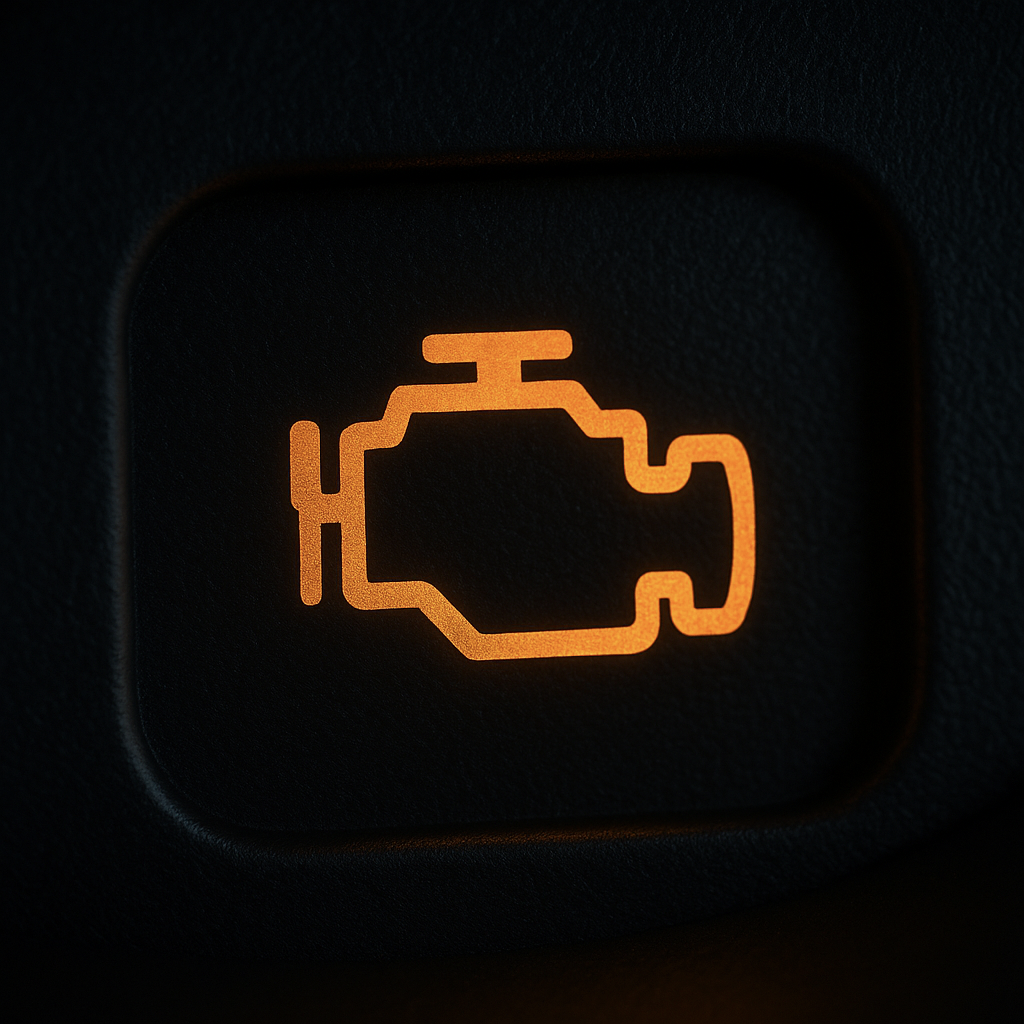
This amber symbol (often an engine outline) indicates a fault detected by the engine management system. The car may still drive normally, but performance and emissions can be affected. In some cases you'll notice reduced power, rough idle, or higher fuel use.
Is it safe to drive? Usually yes for short distances if the light is steady and the car feels normal. If it flashes or the engine runs poorly, reduce load and have it checked immediately.
What to do: Check fuel cap (loose caps can trigger it), avoid hard acceleration, and book a diagnostic. If accompanied by unusual noises, overheating, or strong fuel smell, stop safely and call assistance.
Oil Pressure Warning
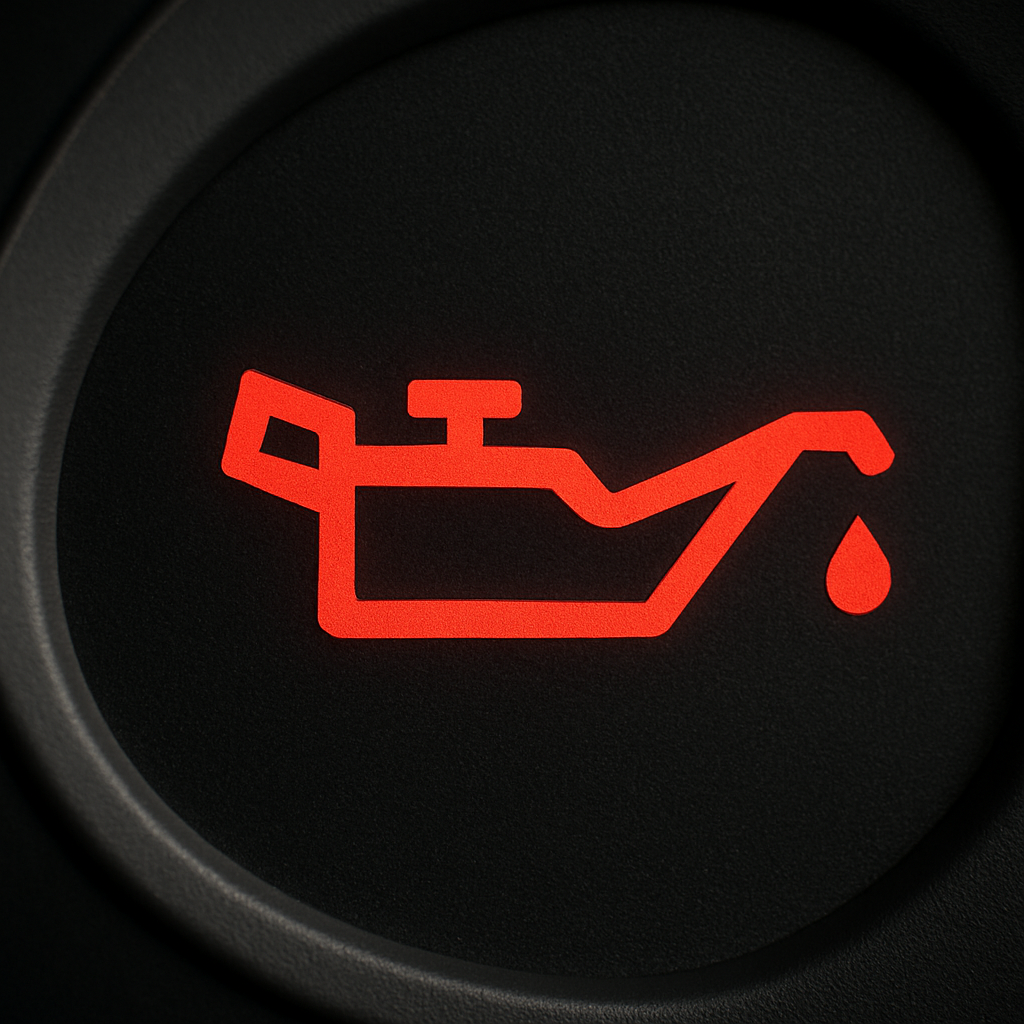
The red oil can symbol means engine oil pressure is critically low. Driving can cause severe engine damage within minutes.
Is it safe to drive? No. Stop the engine immediately in a safe place.
What to do: Check oil level after a few minutes. If low, top up with the correct grade listed in your manual. If the light stays on after topping up, do not restart — arrange recovery to a workshop.
Battery / Charging System

Indicates the alternator isn't charging the battery properly (broken belt, alternator fault, wiring issue). The car will run only until the battery discharges.
Is it safe to drive? Short distance to a safe stop, yes. Switch off non-essential electrical loads.
What to do: If a belt has snapped or you hear unusual noises, stop. Otherwise go directly to a workshop; don't repeatedly restart as this drains the battery.
Engine Coolant Temperature
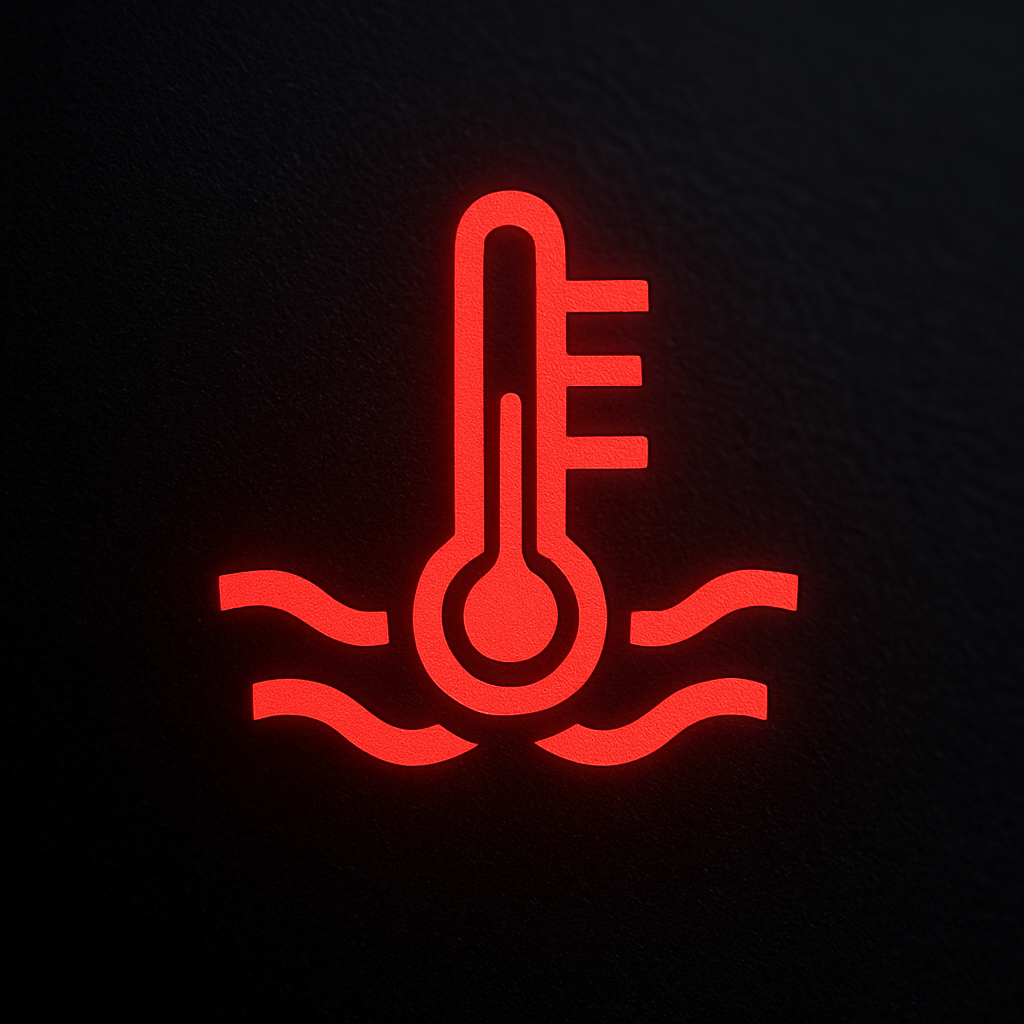
The thermometer symbol means the engine is overheating. Continuing to drive risks head-gasket or engine damage.
Is it safe to drive? No. Pull over, switch off, and let the engine cool.
What to do: Do not open the coolant cap when hot. After cooling, check coolant level and leaks. If the level is normal, call a mechanic; it could be a thermostat, fan or pump issue.
Brake System Warning
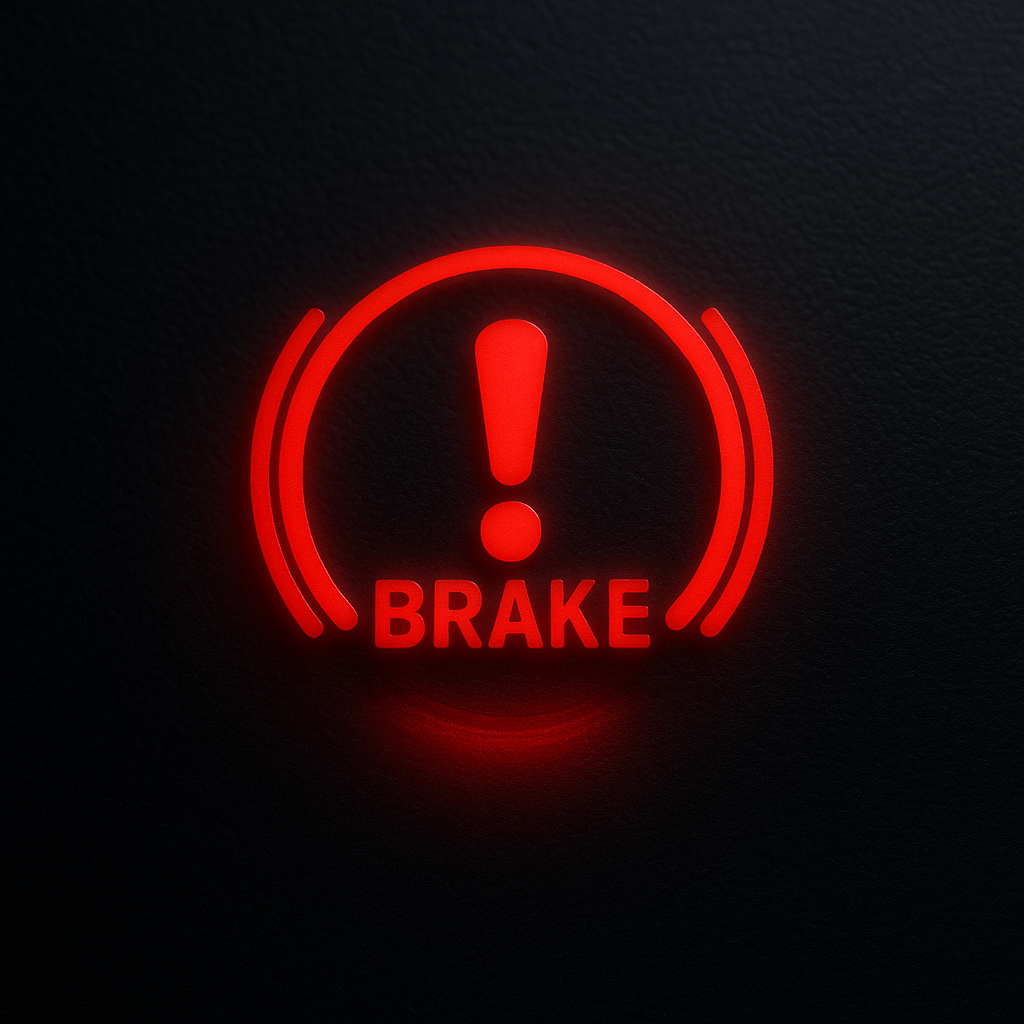
A red exclamation mark in a circle (or "BRAKE") can indicate low brake fluid, a hydraulic fault, or that the parking brake is engaged.
Is it safe to drive? If the handbrake is released and the light remains on, no. Stopping power may be affected.
What to do: Check brake fluid level and look for leaks. If the pedal feels soft/long, don't drive — call for assistance.
ABS (Anti-lock Braking System)

ABS helps prevent wheel lock during hard braking. If the ABS light stays on, normal brakes may still work, but anti-lock assistance and certain stability functions can be disabled.
Is it safe to drive? Usually yes with extra caution, but repair soon.
What to do: Avoid hard braking, increase following distance, and book a diagnostic. Sometimes a dirty wheel sensor is the cause.
Tyre Pressure Monitoring System (TPMS)
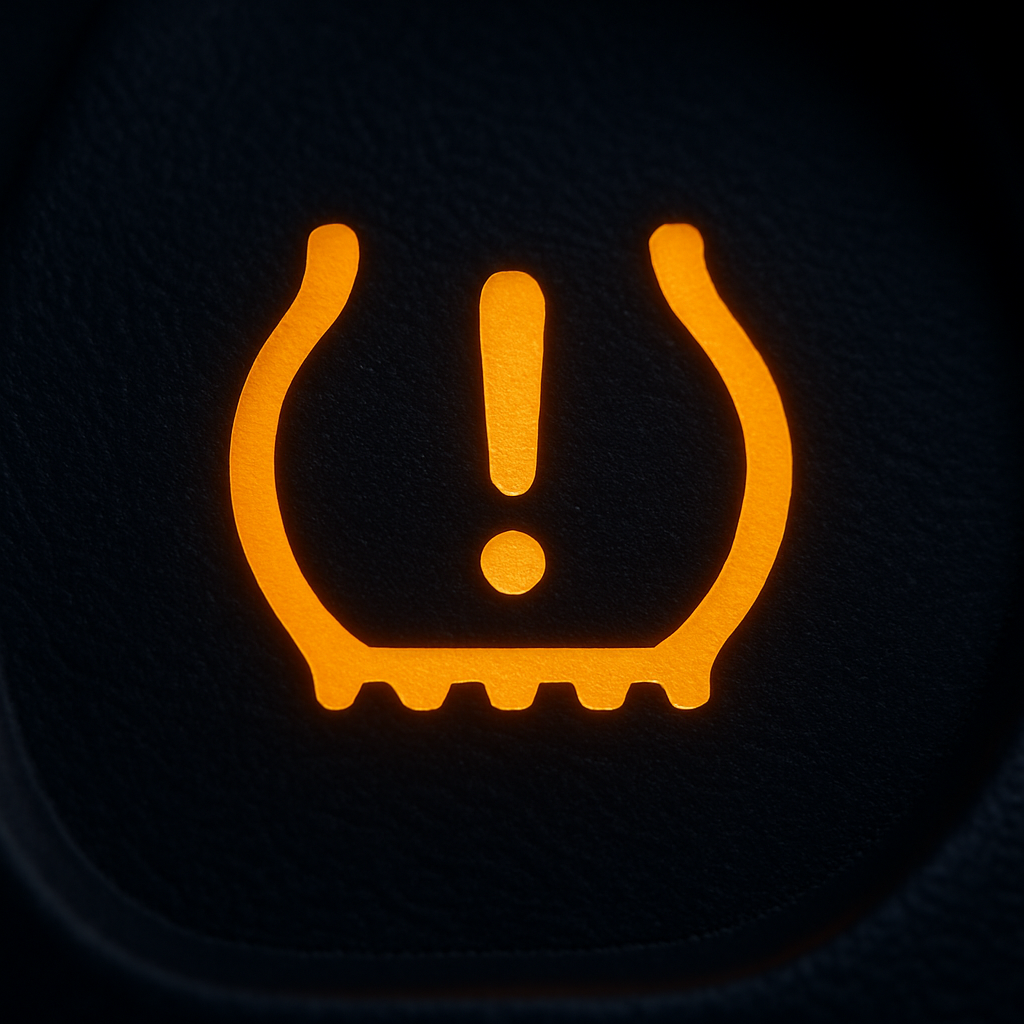
The horseshoe-shaped symbol with an exclamation mark indicates low tyre pressure or a sensor fault. Low pressure increases stopping distance and fuel use.
Is it safe to drive? Usually yes to the nearest pump, at reduced speed.
What to do: Check and set pressures to the values on your fuel-flap/door sticker (often different front/rear). Inspect for punctures. Reset the TPMS if your car requires it after adjustment.
Airbag / SRS
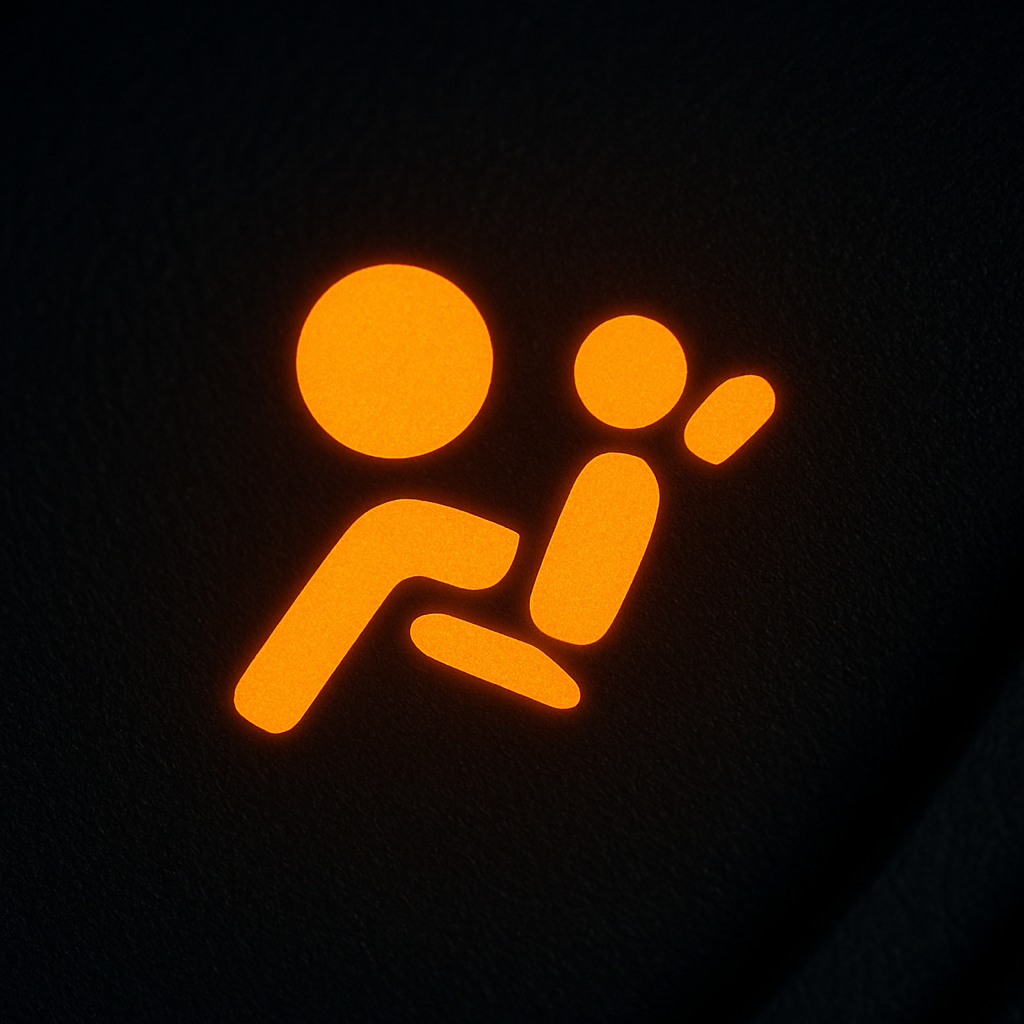
Indicates a fault in the airbag or seat-belt pretensioner system. In a collision, protection may be reduced.
Is it safe to drive? The car may drive normally, but safety systems are compromised.
What to do: Have the system checked promptly. Never fit a rear-facing child seat on an active front passenger airbag; disable it where permitted and indicated by your vehicle's instructions.
ESC / ESP (Stability Control)
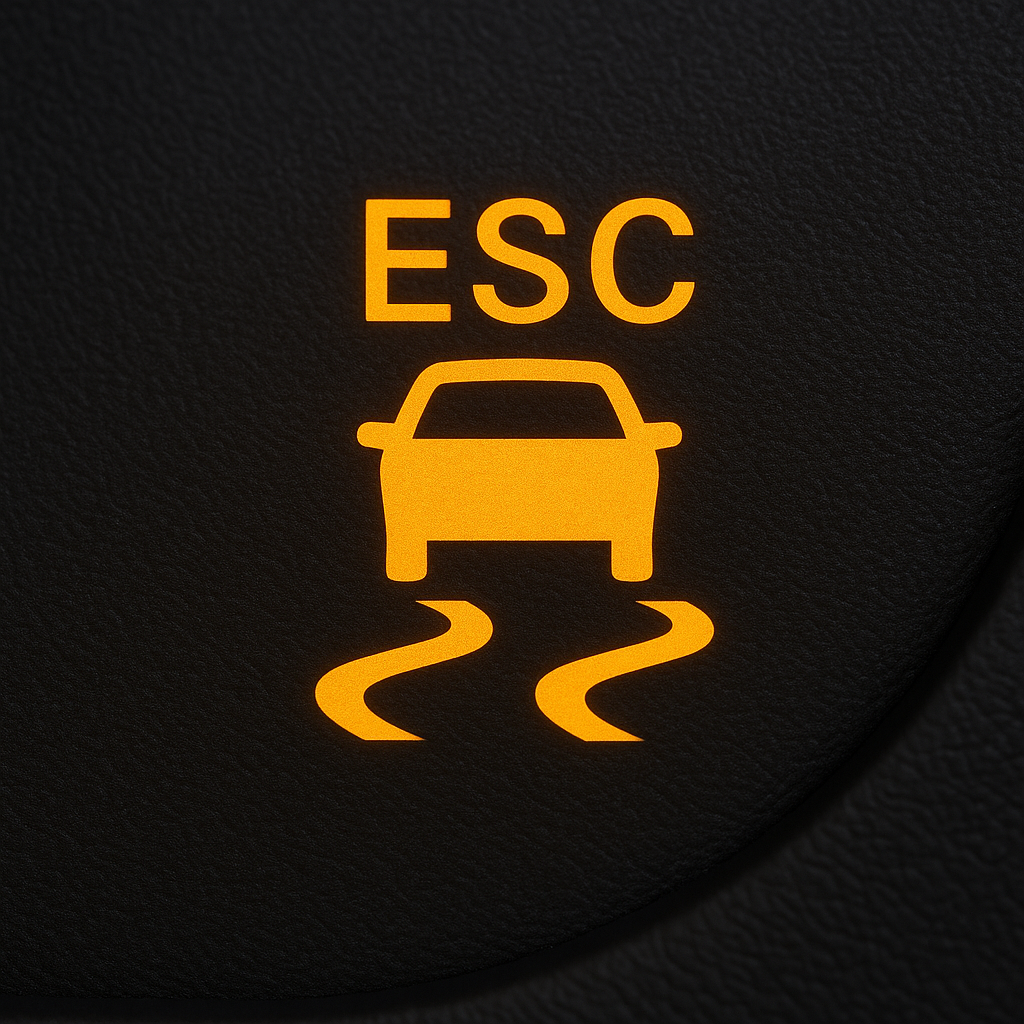
The car with squiggly lines shows when stability control is active or indicates a fault if constantly lit. If flashing while driving on a slippery road, that's normal intervention.
Is it safe to drive? Yes, but if the light stays solid, the system may be off/faulty. Drive with care.
What to do: Avoid sudden manoeuvres; get the system checked if the light remains on.
Diesel Glow Plug / Preheat

On diesel cars, this coil symbol lights before starting. Wait for it to go out before cranking. If it flashes or stays on, there may be a fault.
Is it safe to drive? Usually yes if performance is normal; otherwise have it inspected.
Diesel Particulate Filter (DPF)
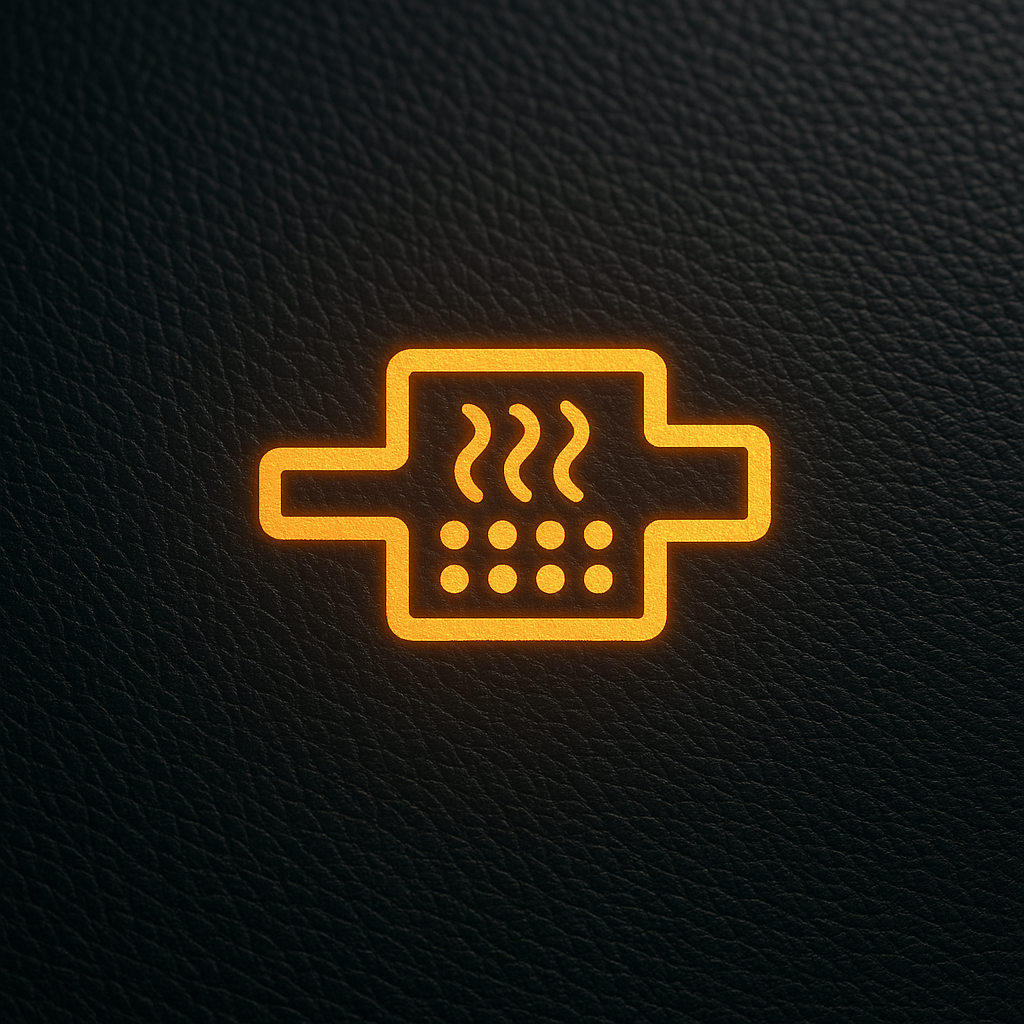
Indicates the filter is becoming clogged. Many cars can self-clean (regenerate) if driven at steady higher RPM for 15–30 minutes.
Is it safe to drive? Yes, but avoid short stop-start trips until it clears.
What to do: Follow your manual's regeneration instructions. If it persists, seek service to prevent costly damage.
Power Steering
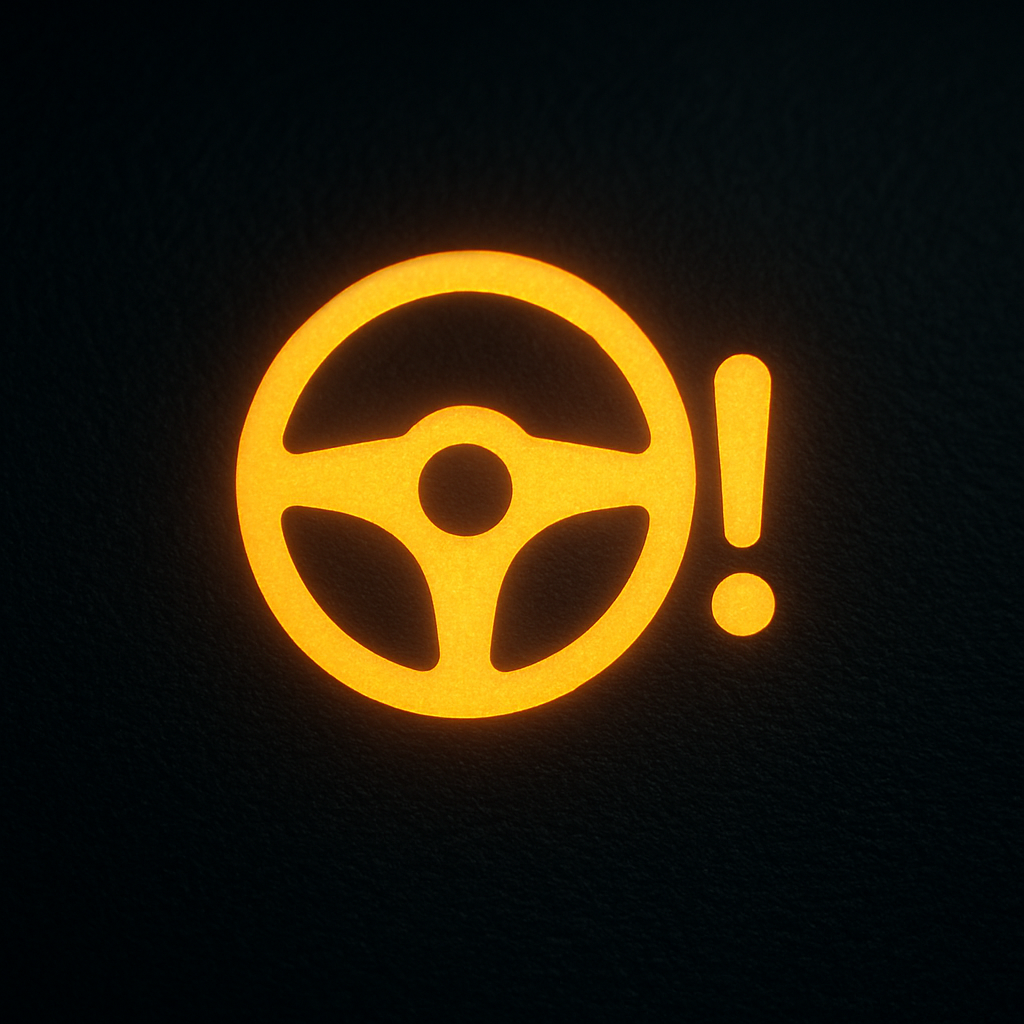
A steering wheel icon means an issue with electric/hydraulic assist. Steering may feel heavy, especially at low speeds.
Is it safe to drive? Usually yes at low speed with care, but fix as soon as practical.
Washer Fluid Low
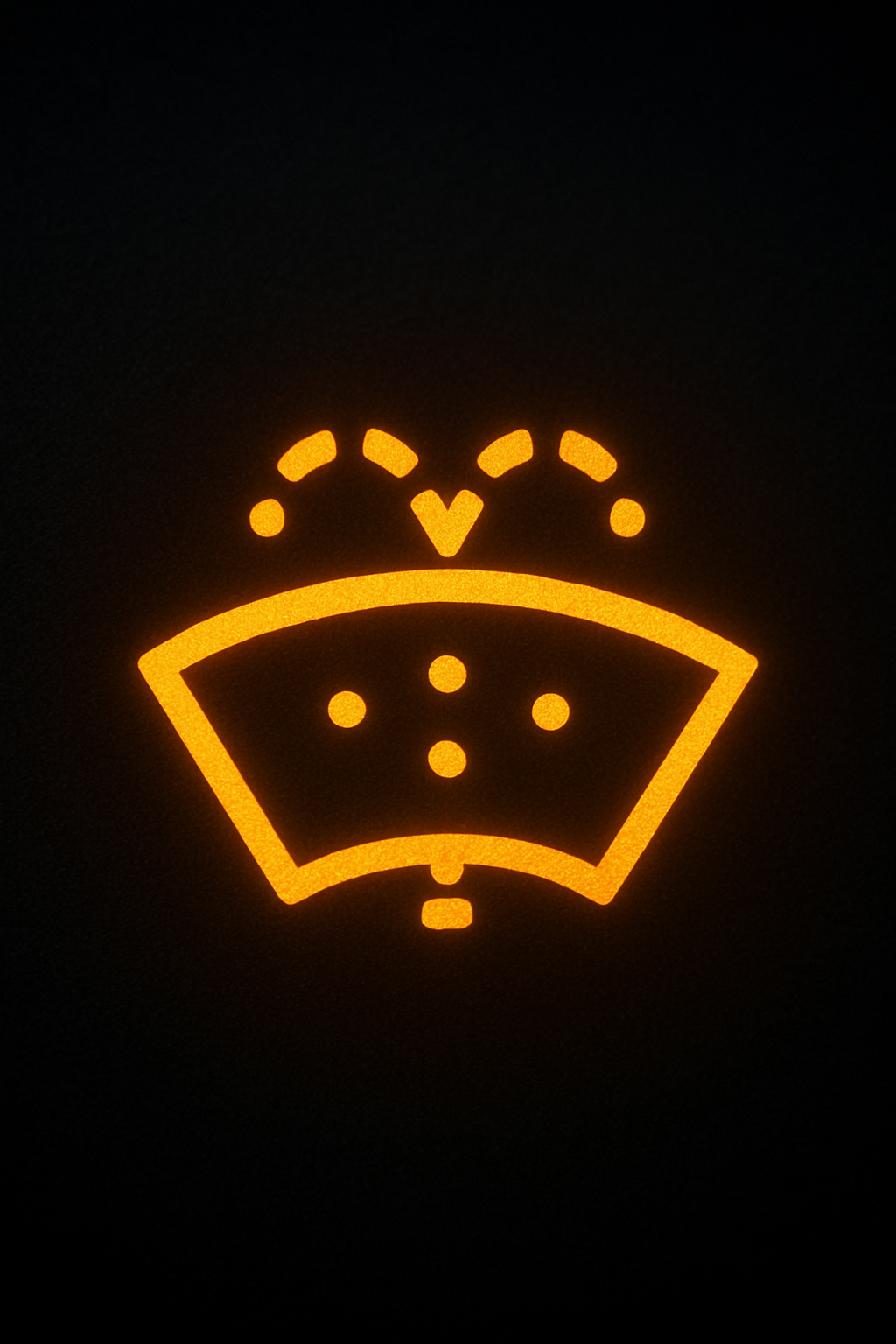
Low screen-wash. In winter, poor visibility and road salt make this more than a minor inconvenience in Sweden.
What to do: Top up with winter-grade fluid rated for local temperatures to prevent freezing.
Low Fuel
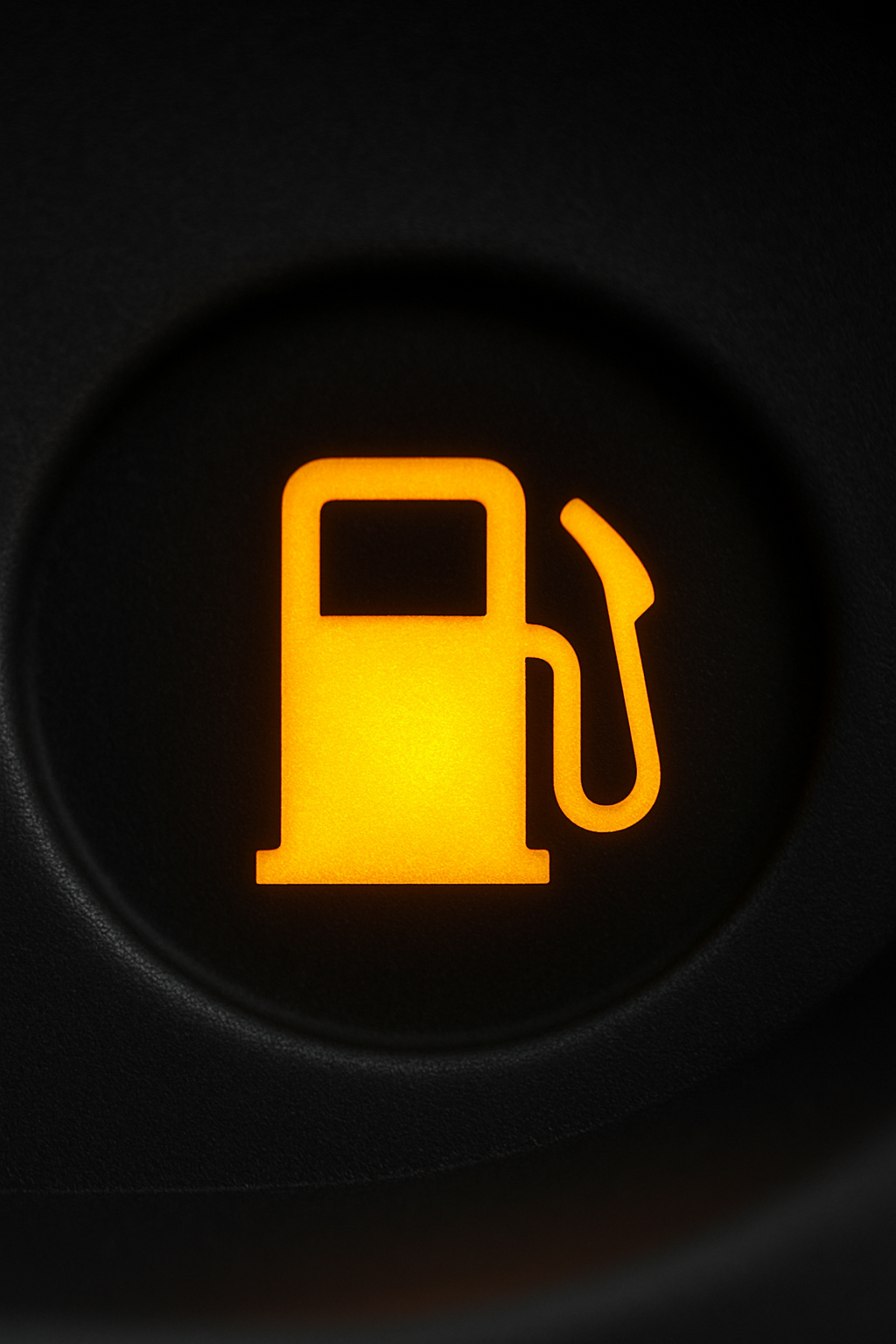
Indicates remaining range is limited. Running very low can overheat fuel pumps in some vehicles.
What to do: Refuel soon; on motorways plan safe stops — Sweden's distances can be long between stations.
Bulb Failure
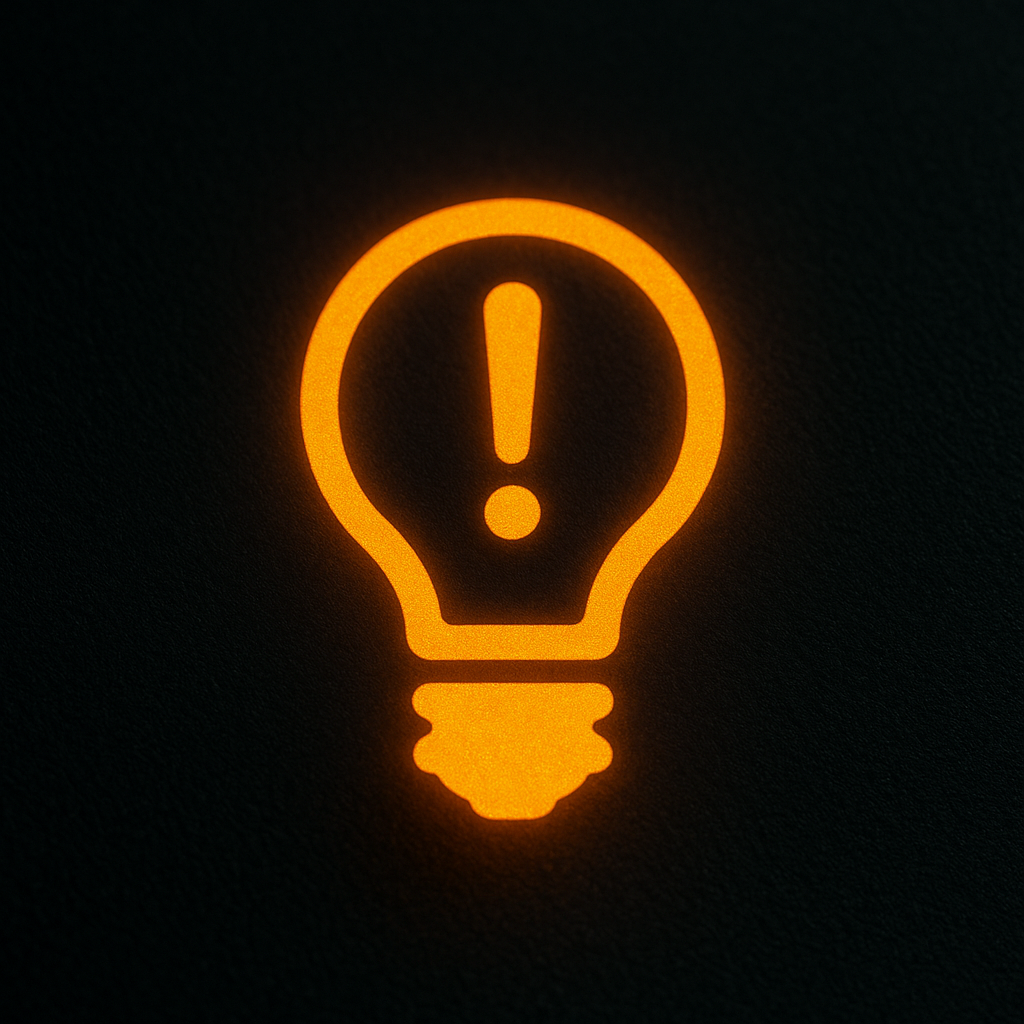
A bulb icon (sometimes with an exclamation mark) signals an exterior light not working: headlamp, brake light, or indicator.
Is it safe to drive? With caution, but replace promptly — it affects safety and legality.
Door / Bonnet / Boot Open

A red open-door or car silhouette indicates something isn't fully latched. At speed, this can be dangerous.
What to do: Stop and close properly. Check bonnet (hood) safety catch carefully.
Seat Belt Reminder
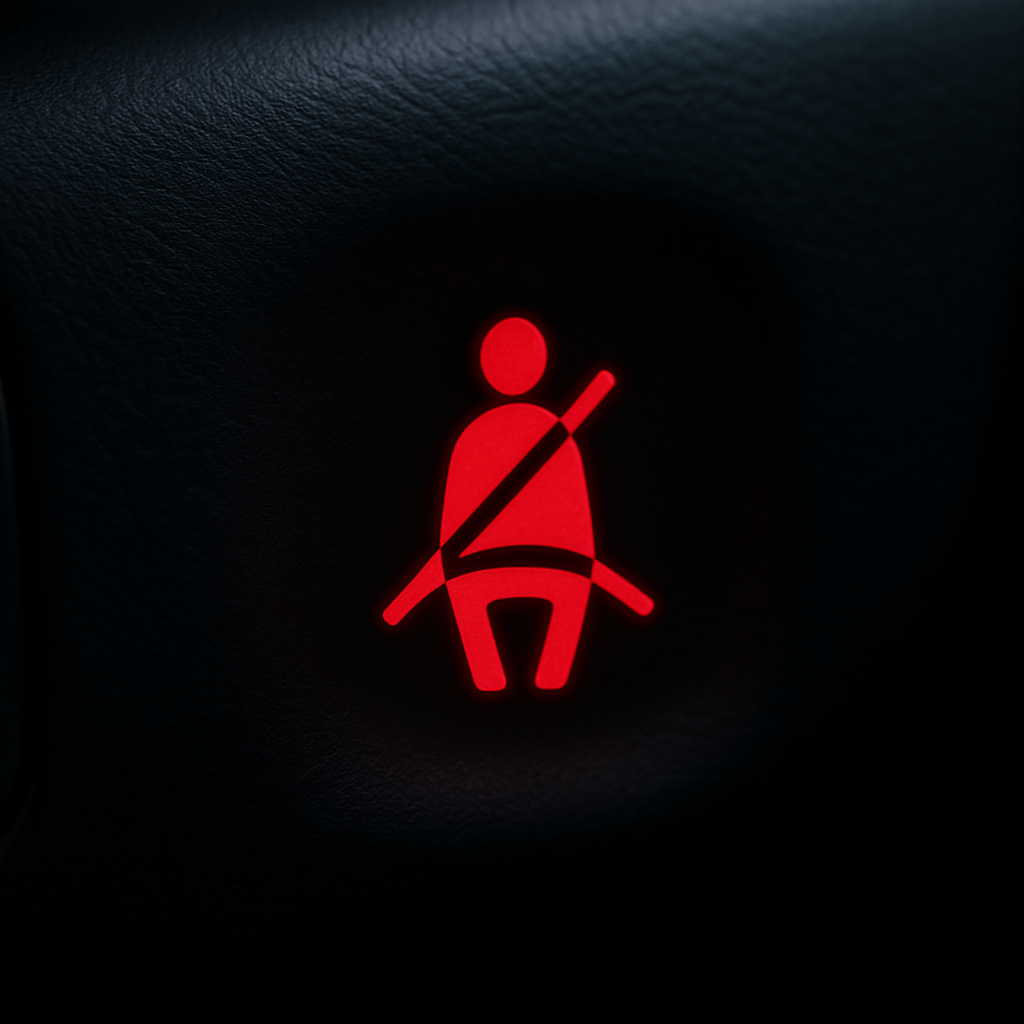
Reminds driver and passengers to buckle up. In Sweden, wearing seat belts is mandatory for all occupants.
Lane Assist

Shows lane-keeping status. Green often means active; amber/grey may indicate unavailable (no lane lines, weather, sensor blocked).
What to do: Keep windscreen sensors clean and avoid relying solely on assistance in snow/heavy rain.
Cruise Control / Adaptive Cruise
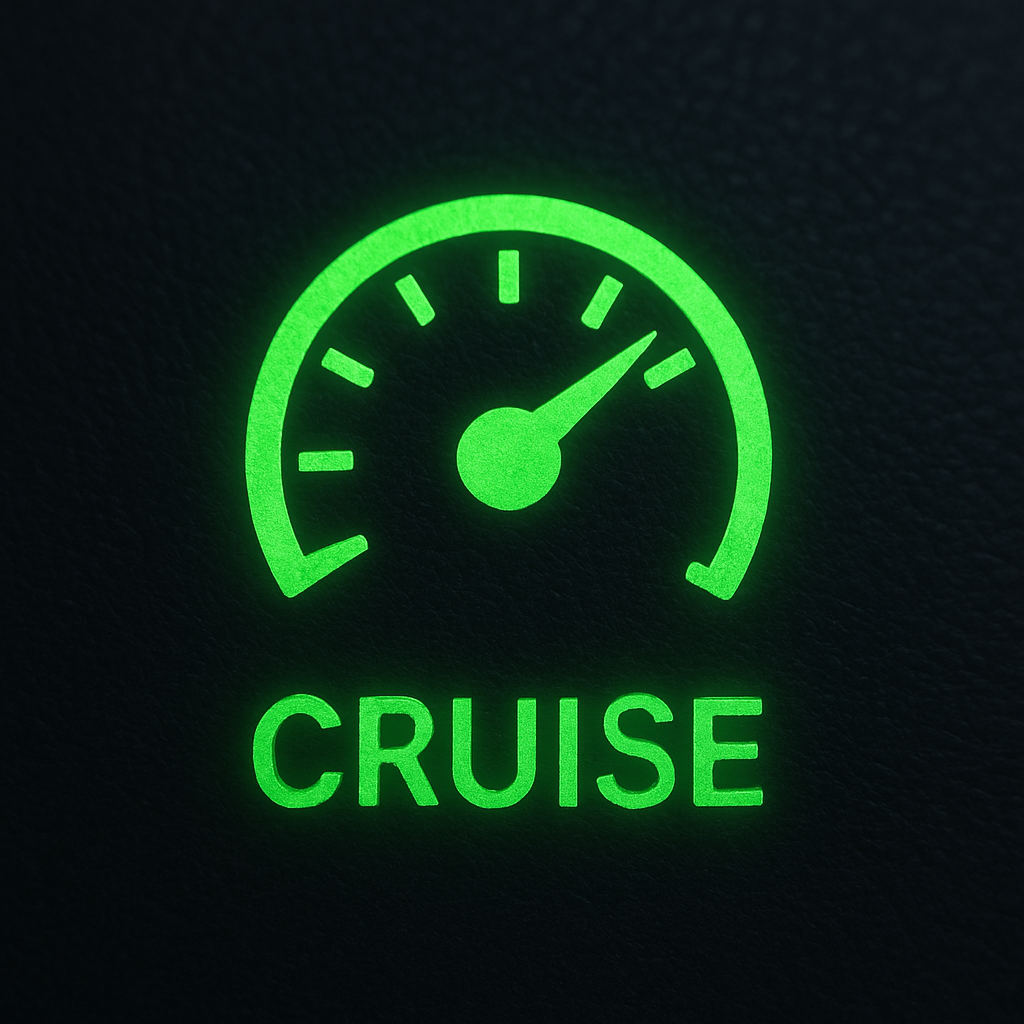
Indicates cruise is set or adaptive cruise is following a vehicle. If warning colours appear, there may be a sensor or distance-control issue.
Exterior Lights Status (Dipped / High Beam / Fog)

Green symbols confirm dipped beam or sidelights; blue shows high beam; green/amber for fog lamps depending on market. Ensure correct use: in fog/snowdrift conditions, use front fogs appropriately and rear fog lamp only when visibility is seriously reduced to avoid dazzling others.
Rear Fog Lamp Indicator

Shows the rear fog lamp is on. In Sweden, use rear fog only in severely reduced visibility (thick fog, heavy snowdrift). Switch off as soon as visibility improves to avoid dazzling drivers behind you.
Brake Pad Wear
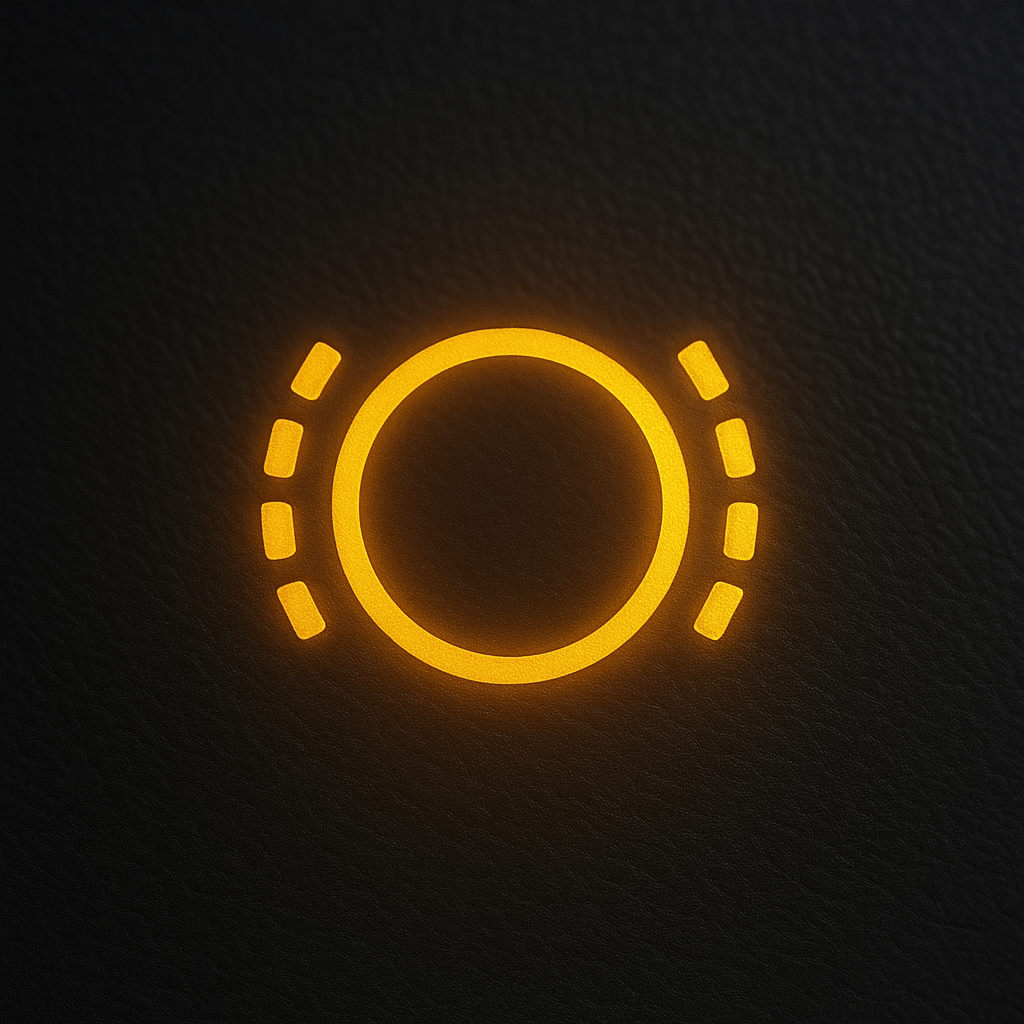
Indicates the brake pads are nearing minimum thickness. Stopping distances may increase and rotors can be damaged if ignored.
What to do: Book an inspection and replace pads soon; winter grit can accelerate wear.
AdBlue / DEF Level (Diesel SCR)
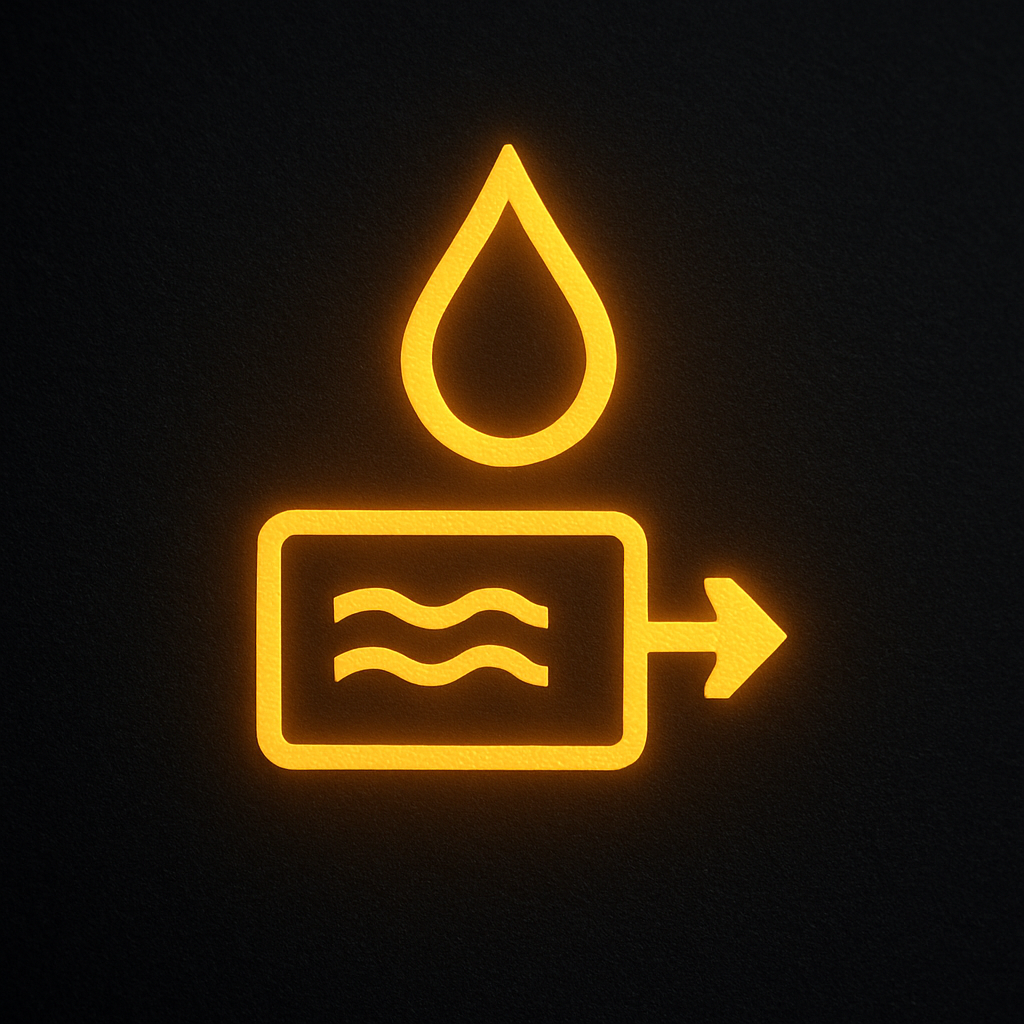
Low AdBlue (Diesel Exhaust Fluid) level or system fault. If the tank runs dry, many cars will not restart.
What to do: Top up with certified AdBlue and follow any on-screen prompts. If a fault remains, seek service.
EV / Hybrid System Warnings

Electric and hybrid vehicles can show specific indicators: high-voltage system fault, reduced power, battery temperature, or "ready" status. A master warning triangle may accompany a message in the cluster.
Is it safe to drive? If a red master warning appears or the vehicle limits power, stop safely and contact assistance.
4WD / Drivetrain Warning

Indicates an issue with all-wheel drive coupling or drivetrain temperature. Hard use in snow or towing can overheat components.
What to do: Drive gently and allow the system to cool; have it inspected if the warning persists.
Transmission Temperature
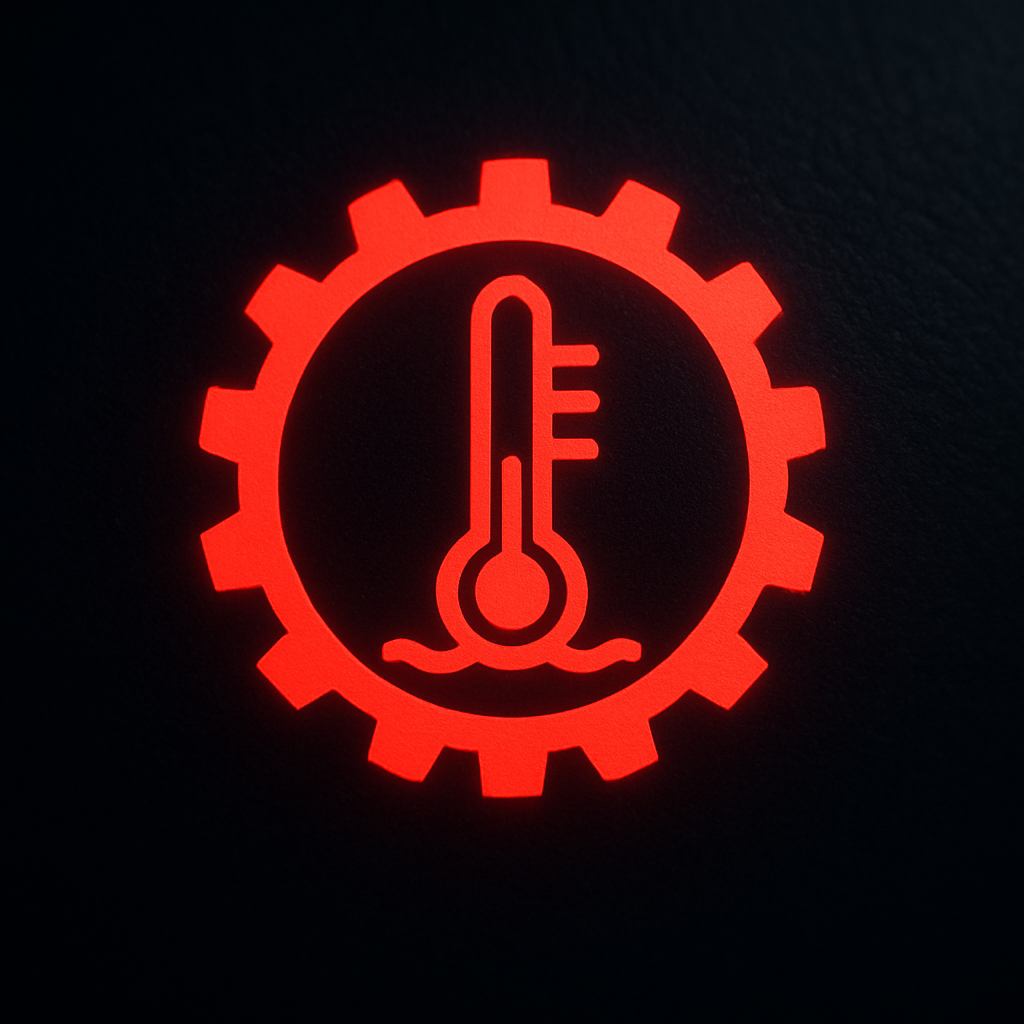
High gearbox temperature, often seen when towing or on steep climbs. Continued driving can damage the transmission.
What to do: Stop to cool, avoid heavy loads, and get the fluid/system checked.
Auto Hold / Parking Brake (A)
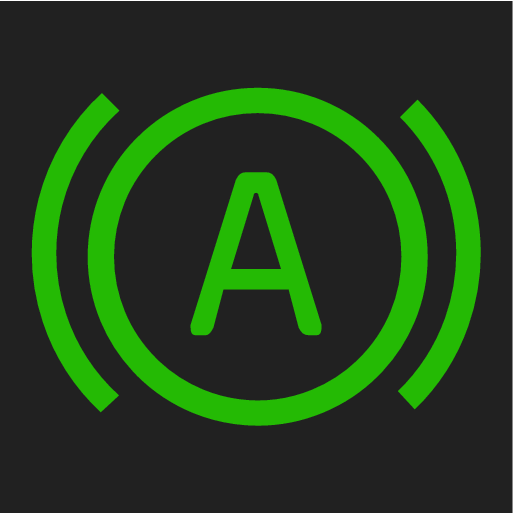
Indicates automatic holding of the brakes at standstill. A flashing or amber version can indicate a fault or that the function is temporarily unavailable.
Top Safety Tips for Swedish Conditions
- Winter readiness: Keep winter-grade washer fluid and a snow brush. Ice can block sensors and warning systems.
- TPMS vs. temperature: A cold snap can drop tyre pressures 0.1–0.2 bar overnight. Recheck and reset if needed.
- Red lights = stop safely: Oil pressure, coolant temperature, and brake warnings are critical — continuing to drive can damage the car or endanger you.
- Manual matters: Symbol design and behaviour vary. When in doubt, compare with your owner's manual and contact a workshop.
- Wiper/washer in slush: In Swedish winter slush, frequent screen washing is essential; keep nozzles clear.
Quick Troubleshooting Steps
- Note the colour (red/amber/green/blue) and whether the light is steady or flashing.
- Check vehicle behaviour: power loss, unusual noises, smells, vibrations, smoke, or fluid leaks.
- Consult the owner's manual; many cars show additional text in the cluster or infotainment.
- For amber warnings, minimise load and drive gently to a safe location or workshop.
- For red warnings, stop safely and seek professional help; avoid restarting repeatedly.
FAQ: Dashboard Warning Lights
Can I clear a warning by disconnecting the battery?
It may temporarily clear some memories but doesn't fix the cause. Modern ECUs log persistent faults; always fix the root issue.
My Check Engine light is on but the car drives fine. What now?
Limit hard acceleration and book diagnostics. A steady light often indicates emissions-related faults (e.g., O2 sensor), but ignoring it can lead to more costly repairs.
TPMS light in winter keeps returning. Is that normal?
Yes, cold weather lowers pressure. Inflate to the recommended values and reset the system if your car requires it.
Is it legal to drive with a bulb failure?
It may be technically possible, but it's unsafe and can be illegal depending on which light is out (e.g., brake lights). Replace promptly.
Related learning
Ready to test your knowledge?
Practice with our interactive driving theory quizzes: